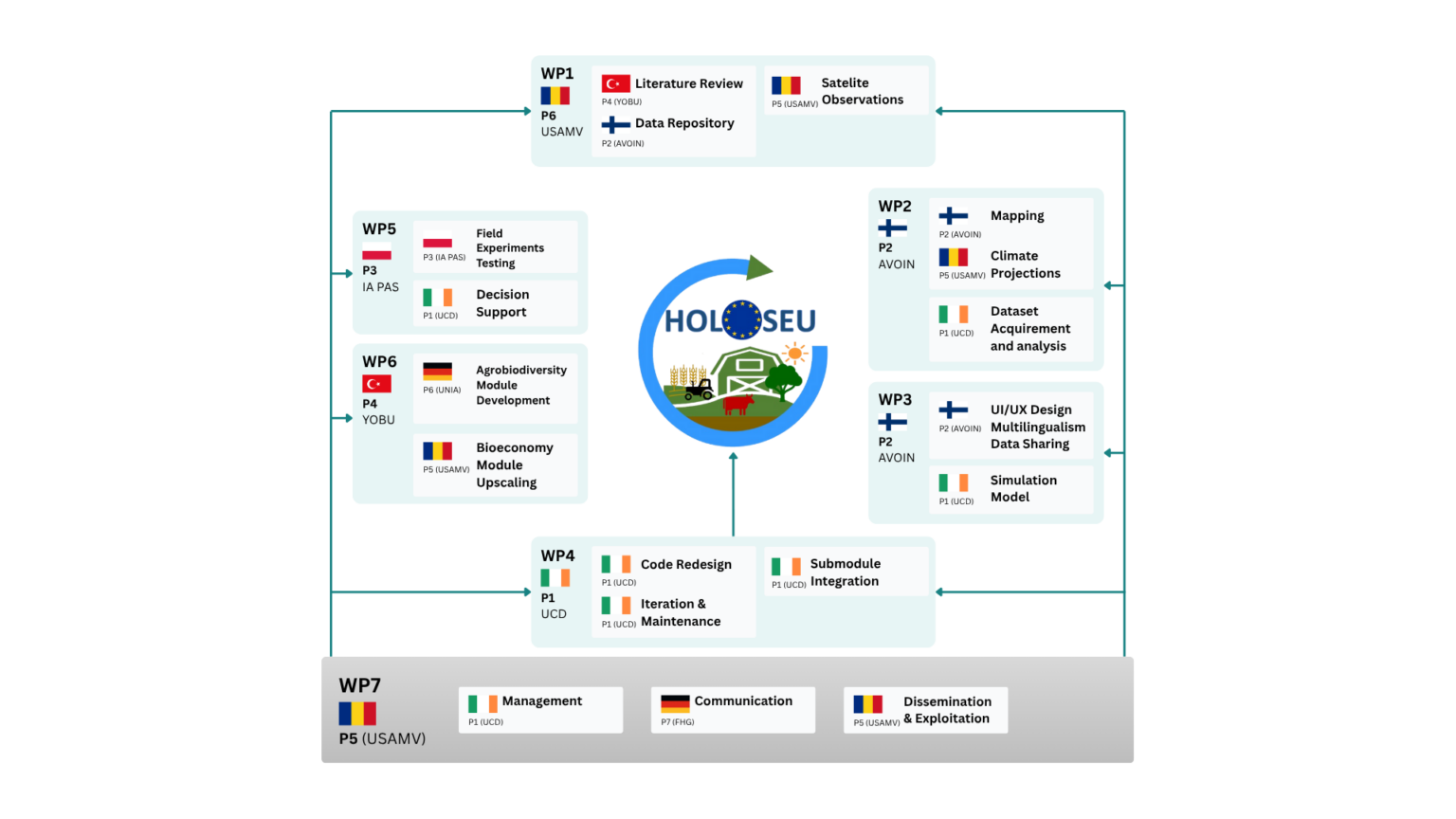Overview of The Work Plan
The HOLOSEU project is structured into seven comprehensive Work Packages (WPs) designed to deliver an integrated, data-driven, and stakeholder-responsive platform for sustainable agricultural management in Europe. Each WP encompasses targeted objectives, detailed tasks, clearly defined deliverables, strategic milestones, and identified risk mitigation strategies. The following sections detail each WP.

WORK PACKAGE 1
Aggregation and Integration of EU Databases for HOLOSEU Advancement
This work package focuses on consolidating a robust foundation of agricultural data across Europe. By integrating diverse datasets—including satellite imagery, soil surveys, and climate records—it enables consistent, validated input for the HOLOSEU model. The outcome is a harmonised and FAIR-aligned data infrastructure that enhances transparency, reusability, and decision-making capabilities.
WORK PACKAGE 2
Integration of Farmers’ Feedback and Advanced HOLOSEU Analytics
This package ensures that HOLOSEU reflects real-world farming practices by integrating user feedback and empirical data. It uses advanced analytics and climate projections to improve the tool’s accuracy and relevance. This connection between model design and practical input helps bridge the gap between research and application.
WORK PACKAGE 3
Develop User Interface and Explore AI for Decision-Making
WP3 delivers a modern interface and intelligent backend for HOLOSEU. The platform will feature AI-driven insights, API-based integrations, and a privacy-conscious design. The result is a seamless and secure user experience that lowers barriers to adoption and supports smarter, data-driven decisions.
WORK PACKAGE 4
HOLOSEU Platform Design and Development
This work package transforms the existing HOLOSIE model into a scalable European platform. By integrating regional data, emission factors, and models, it produces a functional and adaptable system. Continuous testing and iteration ensure high usability and scientific reliability across diverse contexts.
WORK PACKAGE 5
On-Farm Research for Testing and Calibration of HOLOSEU
WP5 grounds the digital platform in real agricultural practice. By deploying trials on diverse farms, it supplies accurate data to test and calibrate the system. This ensures the platform delivers realistic and trustworthy simulations, making it more effective for climate and land-use planning.
WORK PACKAGE 6
Module Development for Agrobiodiversity and Circular Bioeconomy
This work package expands HOLOSEU’s scope to include biodiversity and circular economy metrics. New modules will evaluate species diversity and resource efficiency on farms. These additions enhance the tool’s value for sustainability assessments and broaden its use in carbon and ecosystem service accounting.
WORK PACKAGE 7
Project Management, Dissemination and Communications
WP7 ensures smooth project execution and strong visibility. It manages timelines, finances, and partner coordination while leading outreach and engagement. This package plays a key role in driving adoption and ensuring that HOLOSEU delivers long-term value across Europe’s agricultural landscape.
